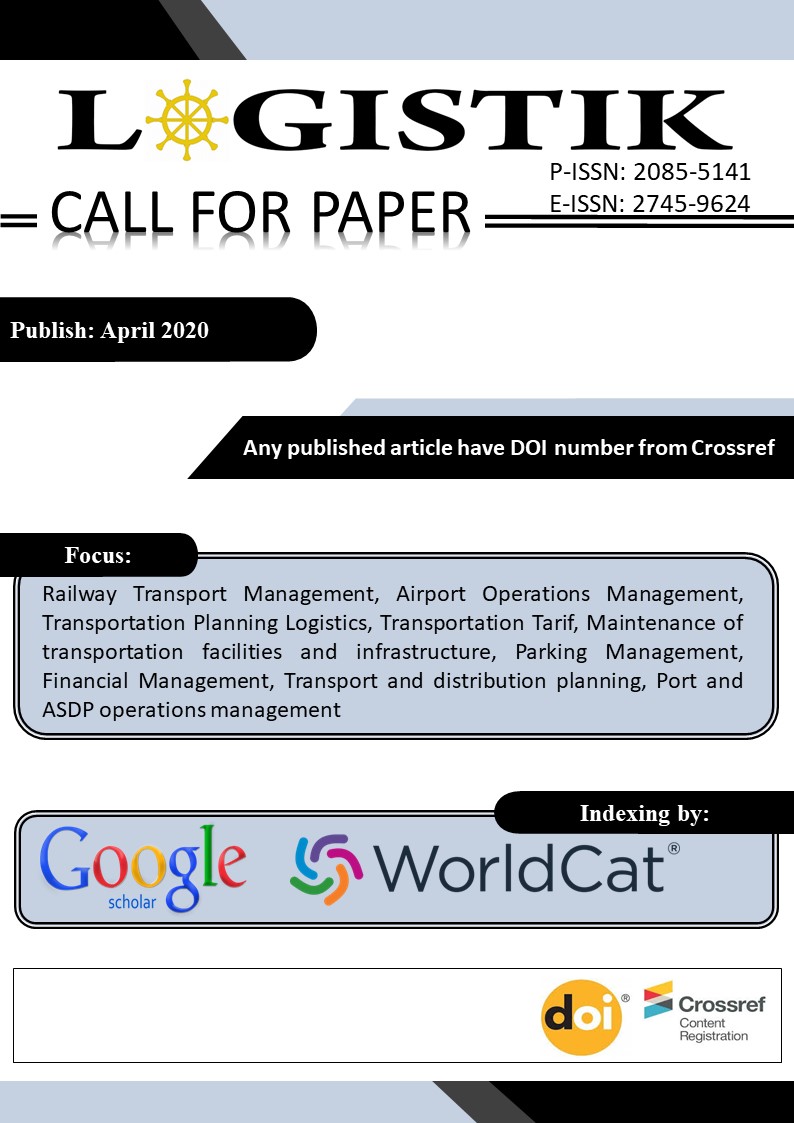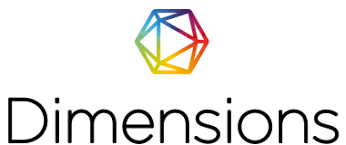ANALISIS DAMPAK KEBIJAKAN TARIF PROGRESIF DALA M HUBUNGAN DWELLING TIME DAN YARD OCCUPANCY RATIO (YOR) DI TERMINAL PETIKEMAS SEMARANG
DOI:
https://doi.org/10.21009/logistik.v13i1.17650Keywords:
Progressive Tarif , Dwelling Time, Yard occupancy ratioAbstract
This final project was conducted during an internship at Terminal Petikemas Semarang which is a company in the field of packaging terminal services. This study aims to analyze the impact of tariff progressive policies on dwelling time and YOR. To achieve the target of dwelling time in less than 3 days and YOR under 50% a progressive tariff policy is set. . the implementation of progressive tariffs is expected to reduce dawling time and YOR, in all of container terminal to be able achieve target expected by the government and to obtain efficiency and smoothly flow of container. To compile this final project the author uses secondary data in the form of dwelling time and YOR data in 2016-2018.
Data obtained then it was analyzed using pearson correlation to know the rapport between dwelling time and YOR then, data dwelling time and YOR will be graphed to find out before progressive tariff policies in analysis in order to get a solution to the problems that exist in order to facilitate the flow of containers in the container terminal. The results of data analysis found that the impact of progressive tariff policies not yetcan reduce dwelling time and YOR significantly and still very much the high of dwelling time and YOR at the Semarang Container Terminal after the progressive rate reached 63.51% and dwelling time 6.14 days then progressive tariffs will not affect dwelling time and YOR.
Downloads
Published
Issue
Section
License
Authors who publish with this Journal agree to the following terms:
- Author retain copyright and grant the journal right of first publication with the work simultaneously licensed under a creative commons attribution licensethat allow others to share the work within an acknowledgement of the work’s authorship and initial publication of this journal.
- Authors are able to enter into separate, additional contractual arrangementfor the non-exclusive distribution of the journal’s published version of the work (e.g. acknowledgement of its initial publication in this journal).
- Authors are permitted and encouraged to post their work online(e.g. in institutional repositories or on their websites) prior to and during the submission process, as it can lead to productive exchanges, as well as earlier and greater citation of published works.
-
Users/public use of this website will be licensed to CC BY-NC-SA Creative Commons Attribution-NonCommercial-ShareAlike 4.0 International License








